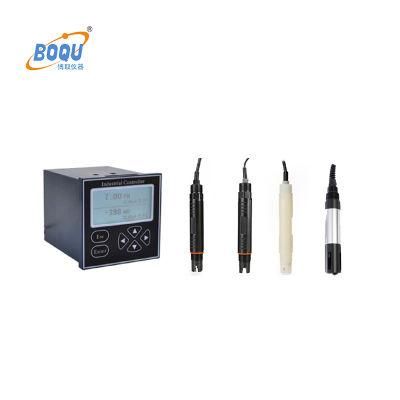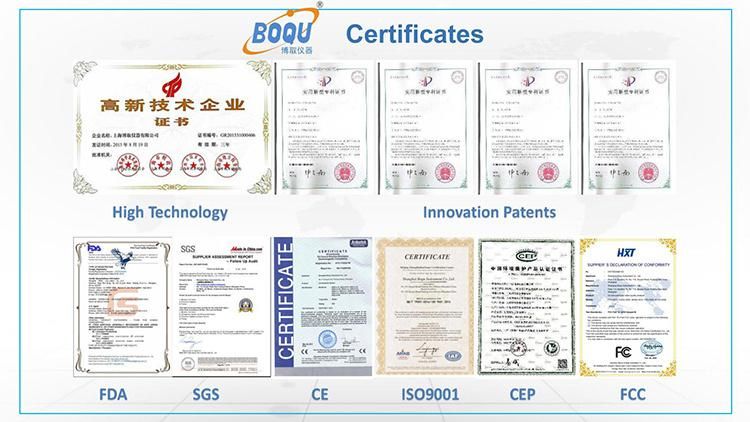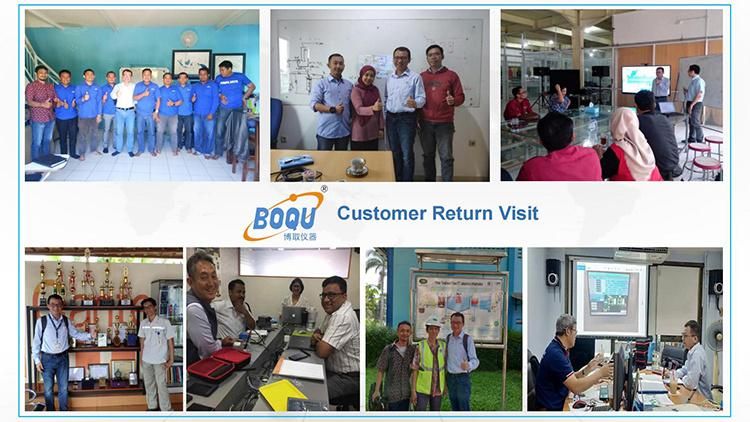
Boqu Ddg-Phg-D2 Double Channel High Quality Digital Industrial Online pH TDS Conductivity Meter
Shanghai Boqu Instrument Co., Ltd.- Display:Digital
- Appliance:Food Analysis, Medical Research, Biochemistry
- Certification:RoHS, FCC, CE, ISO9001
- Name:Online Dissolved Oxygen Mater
- Measuring Range:0~20mg,L, 0.0-200.0%
- Power:90~260VAC
Base Info
- Model NO.:conductivity meter
- Communication:RS485 Modbus
- Signal:4-20mA
- Relays:3 Relays
- Max Temperature:100c
- Transport Package:Quality Package for International Transport
- Specification:BOQU Instrument production over 100 000pcs,year
- Trademark:BOQU
- Origin:China
- HS Code:9027809990
- Production Capacity:100000PCS,Year
Description
Industrial Applicatons
Company Profile
BOQU Exhibition
Certifications
BOQU Instruments is very popular in all global market, because BOQU Water quality anaysis instrument and sensors got most international certicates. As a responsible and high-tech enterprise in China,BOQU Instrument thinks there is still long way to go,so our production is strictly according to ISO9001 from source of raw material to finished instrument. And their is professional staff and test instrument to check each process.now our many instruments have reached or exceeded the world-class level. BOQU instrument also got many certificates such as CE, SGS,FCC and so on.
 Visit Customers
Visit CustomersIn order to provide better service for our customers, we will visit customers in different countries.Only in this way,then we could truly understand customer needs and help customers to choose right water quality analyzers and sensors.
 FAQ
FAQFAQ of Sewage treatment calibration conductivity tester
1. How can dissolved oxygen be measured using fluorescence?A very specific energy wavelength is transmitted to a ruthenium compound immobilized in a sol-gel matrix. The ruthenium will absorb this energy, changing the outer electron's energy level. The electron will then collapse back to its original energy state, emitting the energy as a photon with a different specific wavelength. This is called "fluorescing". If the intensity of the transmitted wavelength is tightly controlled, the amount of fluorescing is both predictable and repeatable.
2. How often do the sensors need to be calibrated?
We recommend that the calibration be checked at least once a year. The sensor will drift less than one percent per year.
3. How long has this technology been in use?
Fluorescence technology has been used to measure oxygen uptake in the medical industry for decades. In the early 2000s, the technology was adapted for use in measuring dissolved oxygen in biological reactors. The key issues in making the technology viable in the water treatment industry were the durability of the sensing element and cost. Another important concern was packaging the system in a way that was easy to use and required very little maintenance. The Insite units have accomplished all of these objectives.
4. Can the sensor be calibrated in the field?
Yes, the sensor can be calibrated in the field. A simple calibration to a reference takes about a minute.
